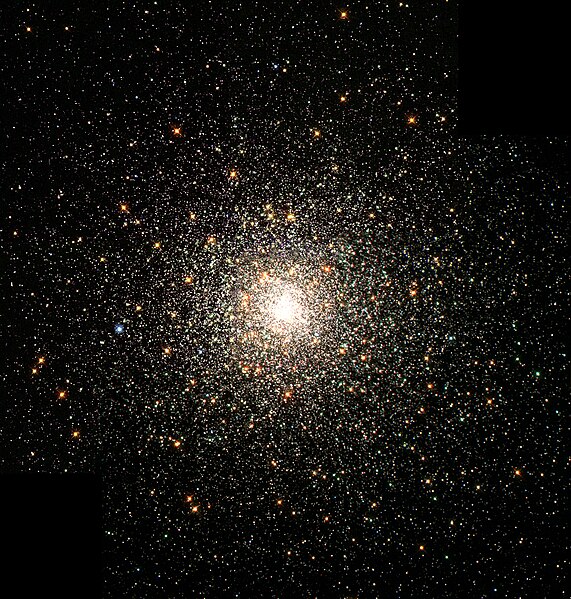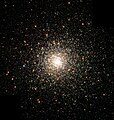Fasciculus:A Swarm of Ancient Stars - GPN-2000-000930.jpg

Mensura huius perspectionis: 571 × 599 elementa imaginalia. Aliae mensurae: 229 × 240 elementa imaginalia | 458 × 480 elementa imaginalia | 732 × 768 elementa imaginalia | 976 × 1 024 elementa imaginalia | 1 777 × 1 864 elementa imaginalia.
Sua resolutio (1 777 × 1 864 elementa imaginalia, magnitudo fasciculi: 4.03 megaocteti, typus MIME: image/jpeg)
Historia fasciculi
Presso die vel tempore fasciculum videbis, sicut tunc temporis apparuit.
| Dies/Tempus | Minutio | Dimensiones | Usor | Sententia | |
|---|---|---|---|---|---|
| recentissima | 14:08, 4 Martii 2010 |  | 1 777 × 1 864 (4.03 megaocteti) | Tryphon | From original source http://hubblesite.org/newscenter/archive/releases/1999/26/image/a/ (http://imgsrc.hubblesite.org/hu/db/images/hs-1999-26-a-full_jpg.jpg). |
| 00:54, 9 Aprilis 2009 |  | 1 777 × 1 864 (3.98 megaocteti) | BotMultichillT | {{Information |Description={{en|1=This stellar swarm is M80 (NGC 6093), one of the densest of the 147 known globular star clusters in the Milky Way galaxy. Located about 28,000 light-years from Earth, M80 contains hundreds of thousands of stars, all held |
Nexus ad fasciculum
Ad hunc fasciculum nectit:
Usus fasciculi per inceptus Vicimediorum
Quae incepta Vici fasciculo utuntur:
- Usus in af.wikipedia.org
- Usus in am.wikipedia.org
- Usus in ar.wikipedia.org
- Usus in ast.wikipedia.org
- Usus in az.wikipedia.org
- Usus in be-tarask.wikipedia.org
- Usus in be.wikipedia.org
- Usus in bg.wikipedia.org
- Usus in bn.wikipedia.org
- Usus in br.wikipedia.org
- Usus in bs.wikipedia.org
- Usus in ca.wikipedia.org
- Usus in ce.wikipedia.org
- Usus in ckb.wikipedia.org
- Usus in co.wikipedia.org
- Usus in cs.wikipedia.org
View more global usage of this file.
